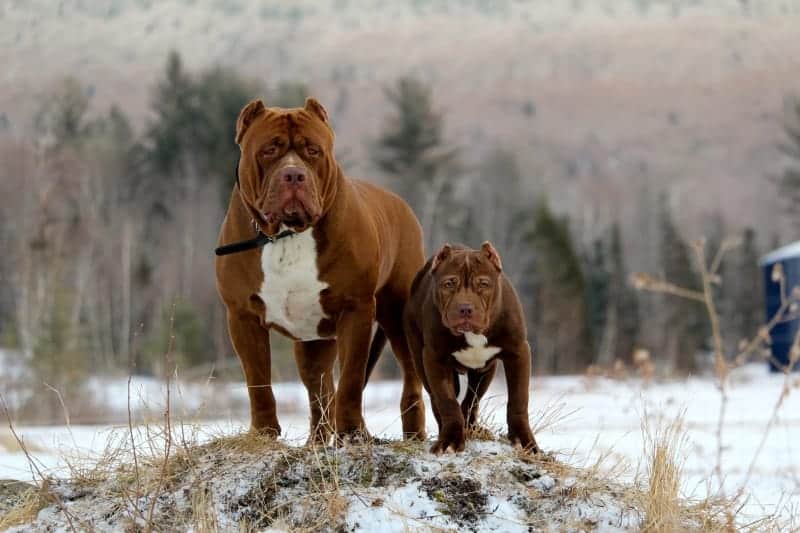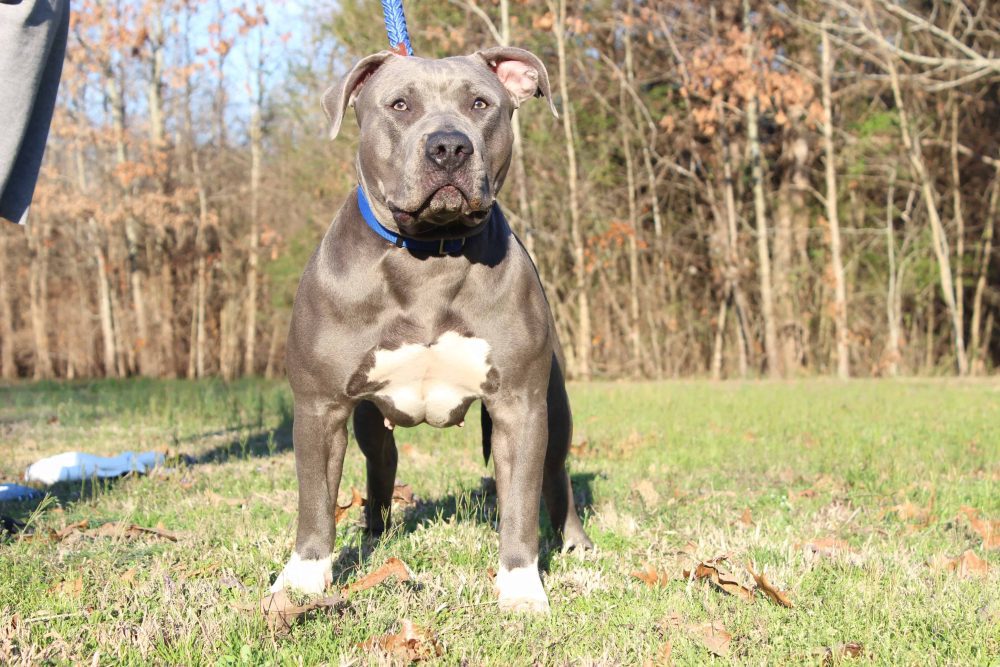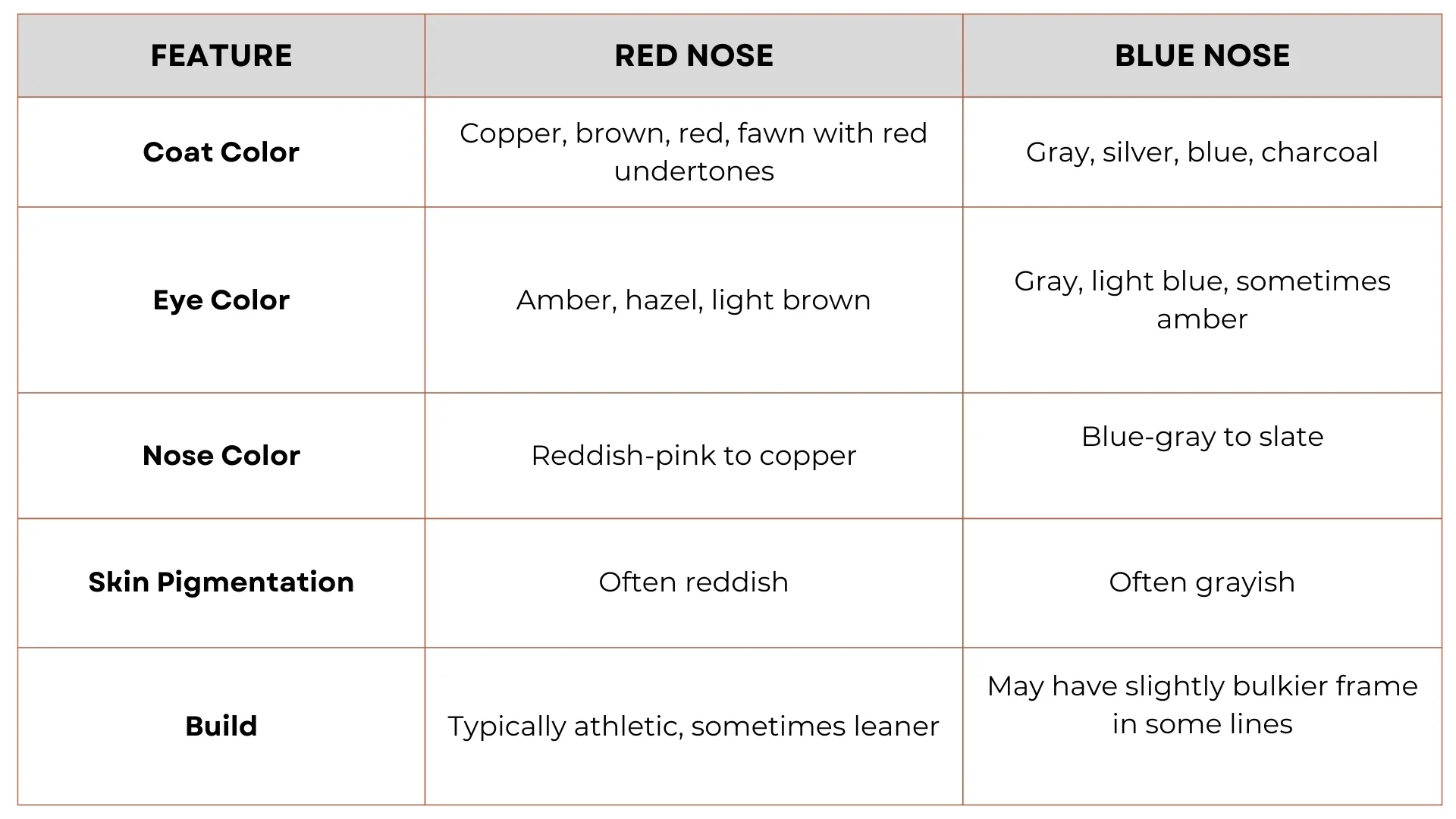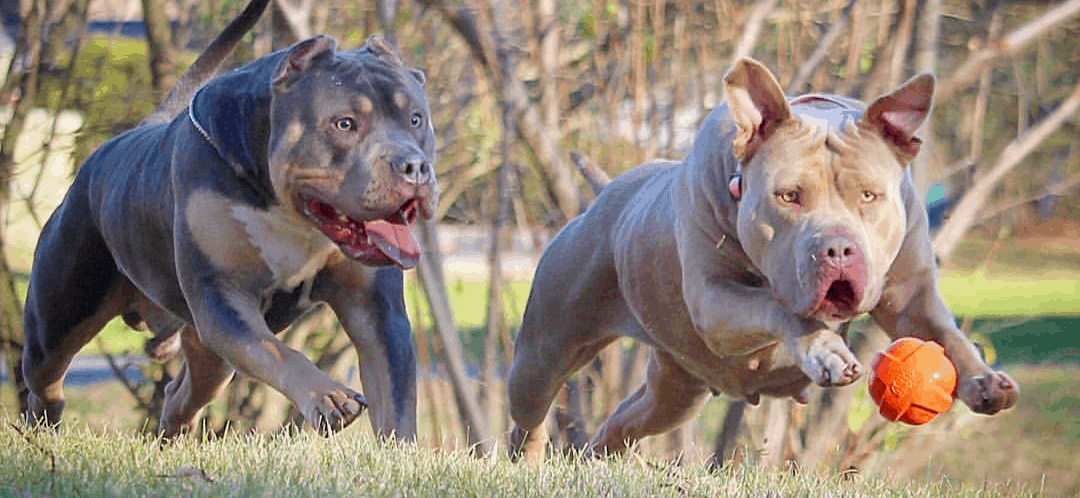When it comes to choosing a Pitbull puppy, terms like "red nose" and "blue nose" frequently come up—but these terms refer to an overall color pattern, not just the nose itself. While the nose color is a distinctive feature, these classifications represent complete color packages that include coat color, eye color, and skin pigmentation. Whether you're considering your first bully breed companion or an experienced owner, this guide will help you understand what truly matters beyond these color designations.
Let's separate fact from fiction and explore the fundamental differences between Red nose and Blue nose Pitbulls—both the
Understanding the Pitbull Breed
Before comparing red nose and blue nose varieties, it's important to clarify: "Pitbull" isn't a single breed but rather an umbrella term covering several breeds, including:
- American Pit Bull Terrier (APBT)
- American Staffordshire Terrier
- Staffordshire Bull Terrier
- American Bully
Both red nose and blue nose Pitbulls typically belong to the American Pit Bull Terrier classification. Their difference lies not in breed classification but in their genetic makeup and resulting physical traits.
The Genetics Behind Nose Color
Nose color in Pitbulls is primarily determined by genetics, specifically how certain genes control the production and distribution of melanin—the pigment responsible for coloring the skin, coat, eyes, and nose.
- Red Nose Pitbulls:
The red nose coloration is linked to recessive alleles at the B (black/brown) locus. These genes reduce eumelanin (black pigment) and increase phaeomelanin (red/yellow pigment), resulting in a reddish-brown nose, lighter eyes, and often a coppery or fawn coat. Both parents must carry and pass on the recessive allele for a red nose puppy to be produced.
- Blue Nose Pitbulls:
The blue nose trait stems from the presence of the dilution gene at the D (dilute) locus. This gene dilutes black eumelanin, causing it to appear as a bluish-gray color. Blue nose Pitbulls typically have a steel gray coat, light gray to bluish eyes, and a matching nose. This is also a recessive trait, requiring both parents to carry the dilution gene.
These pigmentation genes don’t just influence nose color—they often result in coordinated changes across the dog's appearance, including coat and eye color. While these traits are visually striking, it's important to note that they have no direct impact on a Pitbull’s temperament, health, or intelligence. However, excessive focus on breeding for color can sometimes lead to a reduced gene pool, so responsible breeding practices are crucial.
What Is a Red Nose Pitbull? Origins, Appearance & Temperament.

Striking Appearance Rooted in Recessive Genetics
Red Nose Pitbulls are visually distinguished by their reddish or copper-toned coats, amber or hazel eyes, and red, pinkish, or flesh-toned noses. These features are the result of recessive alleles at the B (black/brown) and D (dilution) loci, which reduce the production of eumelanin (black pigment) in favor of phaeomelanin (red/yellow pigment). Both parents must carry and pass on these recessive traits for a red nose puppy to be born.
Unlike dominant traits, recessive characteristics can remain hidden in a dog's genetic makeup for generations, making the appearance of red-nosed puppies relatively rare—especially when breeding is not specifically aimed at preserving these traits.
The OFRN Bloodline: A Historic Lineage
Much of the red nose mystique can be traced to the Old Family Red Nose (OFRN) bloodline, one of the most historically celebrated Pitbull lineages. Originating in Ireland in the mid-1800s, OFRN dogs were bred for strength, stamina, and gameness, primarily for use in farm work and historically, in dog sports.
These dogs were imported to the United States in the early 20th century, where select breeders continued developing the line. OFRN Pitbulls were prized for their uniform reddish features, but more importantly, for their stable temperament, intelligence, and athleticism.
It's important to note that not all red-nosed Pitbulls today are direct OFRN descendants. The OFRN gene pool has been widely mixed with other lines over the years. Authenticating a pure OFRN dog requires careful pedigree records and in some cases, genetic testing, although no DNA test can currently confirm OFRN lineage with absolute certainty.
Red Nose Temperament Traits
While a dog’s temperament is shaped by both genetics and environment, breed enthusiasts and experienced owners often report a distinct personality profile associated with red-nosed Pitbulls:
- Strong Loyalty and Family Attachment: These dogs often form deep bonds with their families. Their protective yet affectionate nature makes them loyal guardians and loving companions.
- High Energy and Playfulness: Red nose Pitbulls are typically very active, requiring regular physical activity and mental stimulation. Without it, they may become bored or destructive.
- Intelligence and Trainability: Known for their eager-to-please attitude and problem-solving skills, red nose Pitbulls respond well to positive reinforcement training and consistent routines.
- Balanced Drive and Focus: While they possess working-dog energy and determination, many red nose Pitbulls exhibit a balanced drive that allows them to settle down after playtime and enjoy family life indoors.
These traits make them well-suited for active households, families with older children, or even working environments where their intelligence can be channeled into agility, obedience, or protection work.
Misconceptions and Responsible Ownership
Despite their intimidating appearance, red nose Pitbulls—like all well-bred and properly socialized Pitbulls—are naturally gentle, people-oriented dogs. Their historical association with dog fighting has contributed to harmful stereotypes, but today's red nose Pitbulls are more likely to be therapy dogs, family pets, or sport competitors than anything else.
That said, responsible ownership includes:
- Early and ongoing socialization
- Consistent, positive-based training
- Adequate exercise and mental stimulation
- Secure fencing and supervised interactions with other pets
What Is a Blue Nose Pitbull?

Blue Nose Pitbulls get their distinctive look from a genetic quirk—specifically, a recessive gene that affects pigmentation. When a dog inherits two copies of the recessive 'd' allele at the dilution (D) locus, it changes how eumelanin (black pigment) is expressed in their body. Instead of intense black, you get those beautiful gray and silver tones that make these dogs so striking.
For a puppy to have that blue nose, both parents must carry this dilution gene, even if they don't show the blue color themselves. This is basic genetics at work—when two carriers mate, approximately 25% of their puppies will inherit two copies of the recessive gene and display the blue coloration.
Clearing Up Common Misconceptions
Despite what some breeders might tell you, Blue Nose Pitbulls aren't:
- A separate breed
- Extremely rare
- More valuable than other Pitbulls based solely on color
They're simply American Pit Bull Terriers with a specific color variation. Unfortunately, their distinctive look has led to some irresponsible breeding practices, with some breeders focusing exclusively on color while ignoring health and temperament—the qualities that truly matter in a companion animal.
Personality and Temperament
While coat color doesn't determine personality (that's another common misconception), well-bred and properly socialized Blue Nose Pitbulls typically display these traits:
They're often remarkably affectionate—the kind of dog that thinks they're a lap dog despite weighing 50+ pounds. Many owners describe them as "velcro dogs" because they follow their humans everywhere, craving connection and companionship.
With proper socialization, these dogs can be wonderfully balanced—energetic and playful outdoors, but calm and gentle inside the home. They typically form deep bonds with their families and can be especially patient with children when raised with them.
Like all Pitbull-type dogs, they benefit from early, consistent training. Their intelligence makes them quick learners, though sometimes their enthusiasm can outpace their focus!
Red Nose vs Blue Nose Pitbull Comparison Chart

Are red nose pitbulls more aggressive than blue nose?

As a trainer who's worked with hundreds of pitbulls over the years, I can tell you firsthand: a dog's nose color has absolutely nothing to do with its personality. This is one of those persistent myths that just won't die in the dog community.
What actually shapes your pitbull's temperament is a complex interplay of factors:
Genetics matter—but not coat color genes. The genes that influence behavior are entirely separate from those controlling pigmentation. Responsible breeders select for stable temperaments across generations, focusing on how dogs react to stress, their sociability, and their overall disposition.
Those crucial early weeks of a puppy's life have a profound impact. Puppies that receive proper handling, exposure to different stimuli, and positive experiences with humans and other animals between 3-14 weeks develop far better social skills.
Your training approach makes or breaks your dog's behavior. Consistent, reward-based training creates confident, well-adjusted pitbulls, while harsh or inconsistent methods can create anxiety and behavioral issues.
Daily life matters. Even the most well-bred, well-socialized pitbull will struggle behaviorally if kept isolated, under-exercised, or in a chaotic environment.
Both blue and red nose pitbulls show identical capacity for the traits that make these dogs such devoted companions: their incredible loyalty, their enthusiasm for training, their natural gentleness when properly socialized, and their protective nature that doesn't cross into aggression.
The truth is simple: focus on finding a breeder who emphasizes temperament testing and behavioral stability—regardless of what color nose their puppies have. Your family will thank you for the next decade or more you spend with your well-adjusted companion.
Health Considerations: Beyond Color
Shared Health Concerns
All Pitbull-type dogs, regardless of nose color, should be monitored for:
- Hip and elbow dysplasia (joint conditions)
- Cardiac issues, including aortic stenosis
- Allergies and skin sensitivities
- Hypothyroidism
Color-Specific Health Considerations
Research suggests some color-linked health differences:
Blue Nose Pitbulls may have higher incidence of:
- Color Dilution Alopecia (hair loss condition affecting about 20% of blue-colored dogs)
- Increased skin sensitivity and allergies
- Greater UV sensitivity requiring sun protection
Red Nose Pitbulls:
- Generally do not have color-specific health issues
- May carry genetic diversity from historic working lines
Lifespan and Quality of Life
With proper care, both varieties typically live 12-15 years. Regular veterinary care, appropriate exercise, proper nutrition, and preventative health screening contribute more to longevity than nose color.
Choosing the Right American Bully Puppy for Your Family
Key Selection Criteria
- Individual temperament: Spend time with the puppy to assess its personality
- Health testing: Verify that parents have been screened for common health issues
- Breeder practices: Look for transparency about socialization and early care
- Your lifestyle: Consider your activity level, living situation, and experience
- Training commitment: All Pitbulls benefit from consistent, positive training
Red Flags When Choosing a Puppy
Be cautious of breeders who:
- Emphasize color as the primary selling point
- Charge significantly more for certain colors without health testing
- Make claims about behavior based solely on color
- Cannot provide health clearances for breeding dogs
- Do not allow you to meet the puppy's parents or see their living conditions
Key Takeaways
- Nose color reflects genetics but doesn't determine personality or ability
- Both red and blue nose Pitbulls can make excellent family companions
- Health testing and temperament are more important than color
- Responsible breeding practices matter more than preserving specific colors
- Individual dog variation exists within any color pattern
I am a highly skilled content writer and SEO expert with a passion for helping small businesses succeed in the digital world. With my extensive knowledge of the latest SEO techniques and strategies, I have successfully assisted numerous clients in improving their website rankings, generating more leads, and driving a significant increase in website traffic.
As a professional content writer and SEO expert, I am confident in my ability to contribute significantly to the success of small businesses. If you are seeking a results-driven, highly skilled digital marketer who can help you increase your ranking, convert new leads, and see a substantial improvement in website traffic, I would welcome the opportunity to collaborate with you.
Website: https://manmadewebsites.com/
Email: hello@digitalmarketingchap.com
